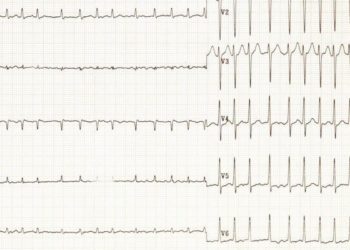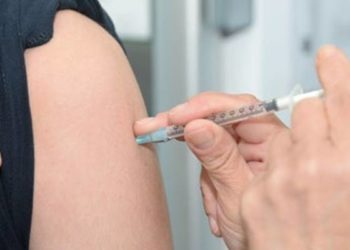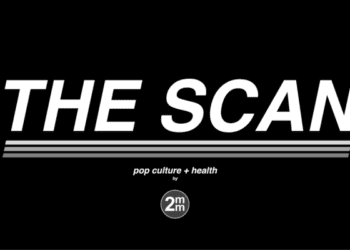2 Minute Medicine Rewind August 27, 2018
Trends in mammography use among women age 40 to 49 years with a history of breast cancer
By way of early detection, mammography screening reduces mortality due to breast cancer (BC). However, the optimal age for initiation of screening continues to be a topic of debate. As personal or past history of BC is a well-documented risk factor for developing a new BC, annual screening has been incorporated into BC survivorship care in the US, with women that have undergone bilateral mastectomy exempt. In 2009, the US Preventive Services Task Force (USPSTF) recommended the initiation of mammography at age 50 years, however, these guidelines were not intended to address surveillance in younger women with a history of BC. In this retrospective cohort study, data on 461,125 women age 40 to 49 years, commercially insured in a Blue Cross Blue Shield of Michigan Preferred Provider organization (2008-2013) were followed up to evaluate the use of mammography in this age group. Researchers found that 1.8% of the study population had prior BC, and that the use of mammography decreased from 62.5% in 2008-2009 to 59.8% in 2012-2013. Importantly, decreases in the use of mammography screening were observed in both women with a history of BC and without a history of BC, with the estimated magnitude of the decrease being greater among women with a history of BC compared to those without (p=0.04). This study therefore shows that women with a history of BC may be receiving inadequate annual surveillance through mammography. This may be due to conflicting guidelines intended for women without a previous history of the disease. Further research is needed in determining how surveillance through mammography can be improved in this patient population.
Telemedicine utilizes telecommunications to diagnose and treat patients. This is potentially useful in the treatment of heart failure, as there are early signs and symptoms of cardiac decompensation that, if detected and treated, may help the patient and provider prevent full decompensation. This randomized controlled trial enrolled patients with New York Heart Association class II or III who had been hospitalized for heart failure in the previous year, and had a left ventricular ejection fraction (LVEF) of less than or equal to 45% (n=1571) and investigated the effects of a telemedical interventional program, as compared to usual care. The primary outcome of percentage of days lost due to unplanned cardiovascular hospital admissions or all-cause mortality was significantly lower in the group who received remote patient management (4.88%, 95% CI 4.55% to 5.23%), as compared to those who received usual care (6.64%, 95% CI 6.19% to 7.13%), resulting in a ratio of 0.80 (95% CI 0.65 to 1.00, p=0.0460). The all-cause death rate was also significantly lower in the group that was managed with telecommunications (HR 0.70, 95% CI 0.50 to 0.96, p=0.0280). Investigators therefore concluded that remote patient management can reduce the percentage of days lost due to unplanned cardiovascular hospital admissions and all-cause mortality in patients with heart failure.
Coronary CT Angiography and 5-Year Risk of Myocardial Infarction
Coronary computed tomographic angiography (CTA) has been used in the assessment of patients with stable chest pain and has previously been shown to improve diagnosis in this patient population. The effects of CTA on more long-term outcomes, however, are unclear. In this parallel-group trial, CTA was investigated for its effects on 5-year clinical outcomes, specifically, death from coronary heart disease or nonfatal myocardial infarction at 5 years. Patients with stable chest pain (n=4146) were enrolled and randomly assigned to receive either usual care plus CTA or solely receive usual care. At a median follow-up of 4.8 years, researchers found that significantly fewer patients that had received CTA met the primary endpoint compared to those receiving standard care (2.3% vs. 3.9%, HR 0.59, 95% CI 0.41 to 0.84). There were no significant differences in the rates of coronary revascularization (HR 1.07, 95% CI 0.91 to 1.27) or invasive coronary angiography (HR 1.00, 95% CI 0.88 to 1.13) at 5 years. There were also no differences reported in deaths due to any cause (HR 1.02, 95% CI 0.67 to 1.55). Investigators therefore concluded that, in patients with stable chest pain, CTA, when coupled with standard care, results in significantly fewer deaths from coronary heart disease or nonfatal myocardial infarction, as compared to standard care alone.
Currently, the radial artery is the recommended site of vascular access for those with acute coronary syndrome (ACS) who are being treated invasively. In this setting, the use of bivalirudin instead of unfractionated heparin with or without glycoprotein IIb/IIIa inhibitors has been shown to decrease bleeding. However, the long-term effects of these interventions, as compared to femoral access and unfractionated heparin, respectively, are unknown. This randomized, open-label superiority trial aimed to assess the comparative safety and effectiveness of radial versus femoral access, and of bivalirudin versus unfractionated heparin with optional glycoprotein IIb/IIIa inhibitors in patients with ACS undergoing invasive management. Patients with ACS undergoing invasive treatment (n=8404) were randomly assigned to receive either radial or femoral access, with a subset of these patients (n=7213) also randomly assigned to receive either bivalirudin or heparin. The patients who received bivalirudin (n=3610) were also randomized to either receive a post-procedure infusion or not. Researchers found that the primary end point of major adverse cardiovascular events, evaluated at 1 year, did not significantly differ between patients receiving radial access, as compared to femoral access (RR 0.89, 95% CI 0.80 to 1.00, p=0.0526). However, adverse events were significantly lower in patients treated via radial access (RR 0.87, 95% CI 0.78 to 0.97, p=0.0128). The rates of both major adverse cardiovascular events (RR 0.94, 95% CI 0.83 to 1.05, p=0.28) and adverse events (RR 0.91, 95% CI 0.81 to 1.02, p=0.10) were not significantly different when bivalirudin was compared to heparin. Investigators therefore concluded that radial access is preferred, as compared to femoral access, for invasive access in patients with ACS. Additionally, bivalirudin did not improve outcomes in this patient population, as compared to heparin.
One-Year Outcomes after PCI Strategies in Cardiogenic Shock
Patients presenting with cardiogenic shock due to acute myocardial infarction often have underlying multivessel coronary artery disease. In these patients, the use of multivessel percutaneous coronary intervention (PCI) is controversial. This randomized controlled trial (n=706) previously investigated the use of immediate multivessel PCI, as compared to PCI of the culprit lesion alone. The results of the initial study indicated that the primary outcome of death or renal replacement therapy (RRT) at 30 days was significantly higher in the group treated with multivessel PCI. This follow-up reports on the endpoints of the trial at 1 year. After 1 year of follow-up, researchers found that the rate of death was not significantly different between the two groups, as death occurred in 50% of patients treated with culprit-lesion only PCI and 56.9%of those treated with multivessel PCI (RR 0.88, 95% CI 0.76 to 1.01). Additionally, the risk of recurrent infarct was not significantly different (RR 0.85, 95% CI 0.29 to 2.50) between the two groups, although rehospitalization for heart failure (RR 4.46, 95% CI 1.53 to 13.04) and repeat revascularization (RR 3.44, 95% CI 2.39 to 4.95) were significantly higher in the group that received PCI of the culprit lesion alone. Investigators therefore concluded that, at 1 year, mortality did not differ significantly in patients with acute myocardial infarction complicated by cardiogenic shock with multivessel disease treated with either PCI of the culprit lesion alone or multivessel PCI.
Image: PD
©2017 2 Minute Medicine, Inc. All rights reserved. No works may be reproduced without expressed written consent from 2 Minute Medicine, Inc. Inquire about licensing here. No article should be construed as medical advice and is not intended as such by the authors or by 2 Minute Medicine, Inc.







